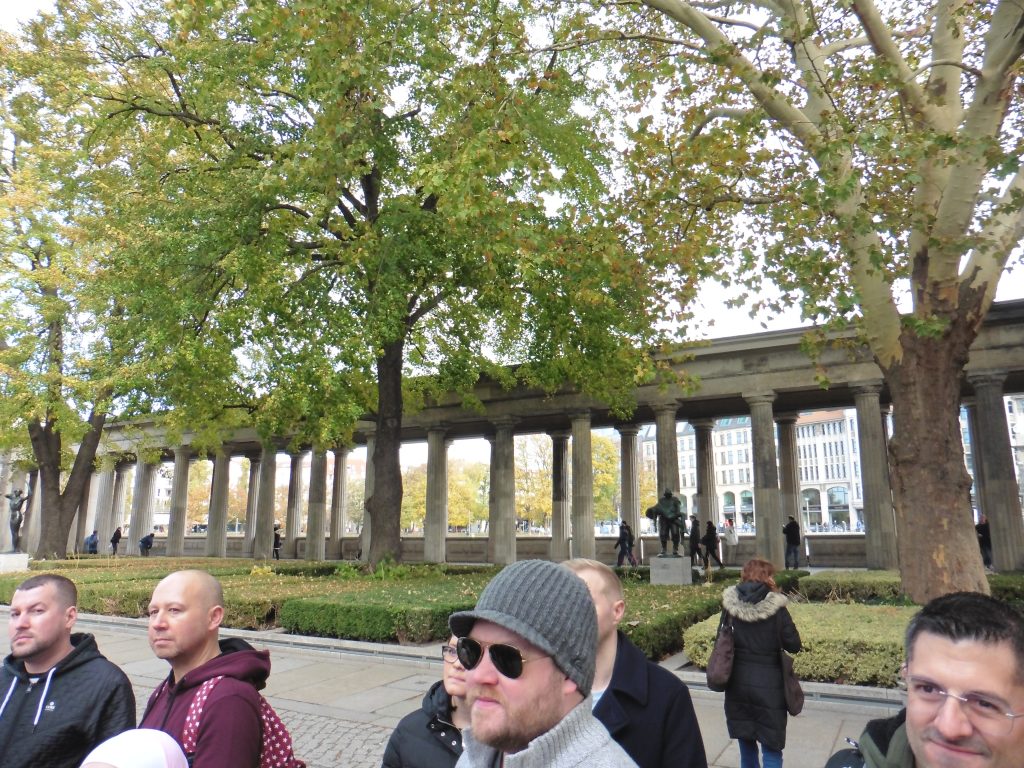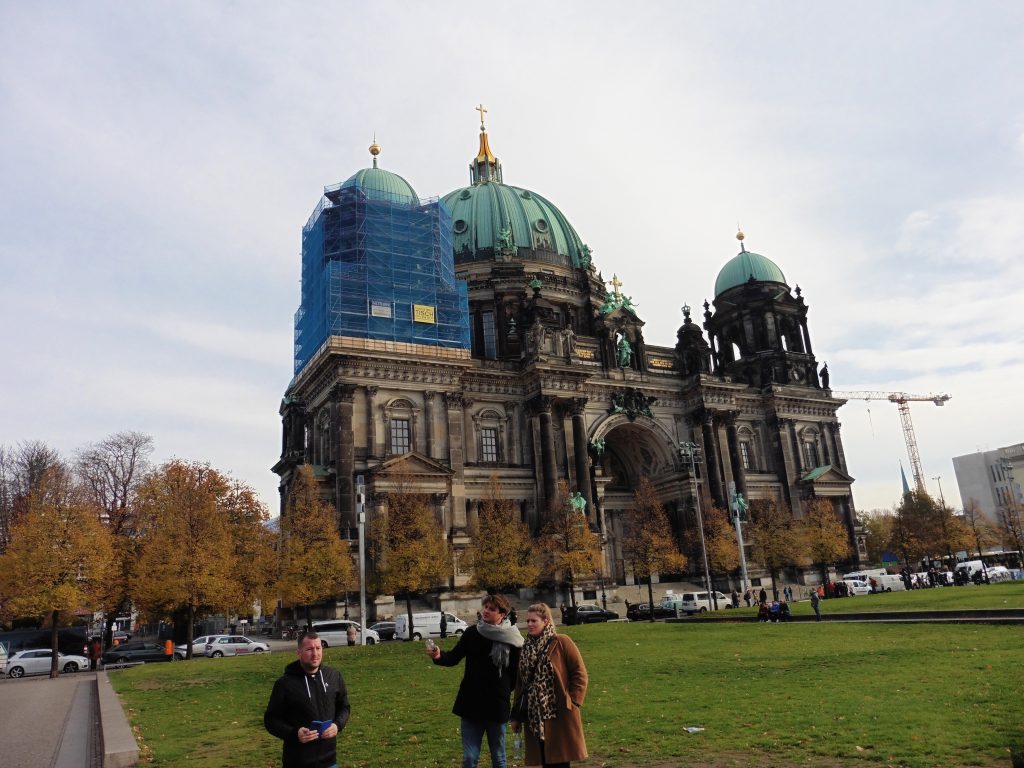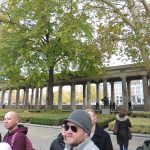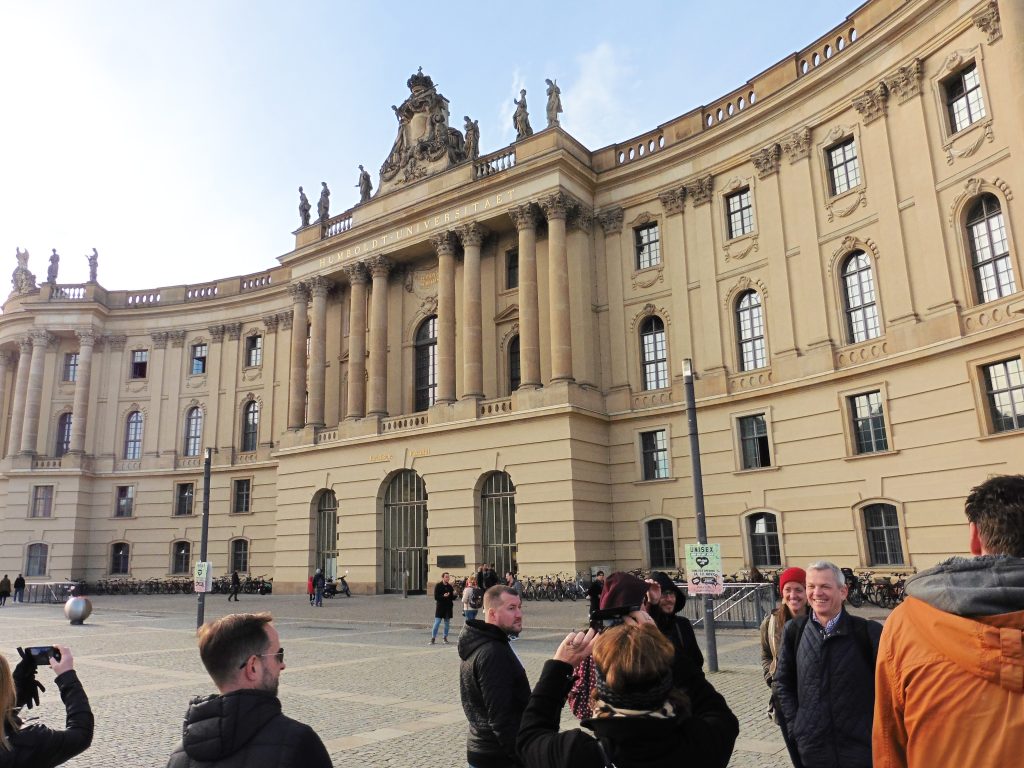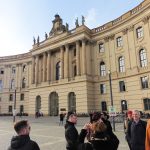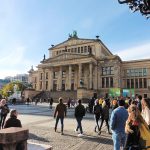
Series: Berlin 2018
Berlin Trip – November 2018

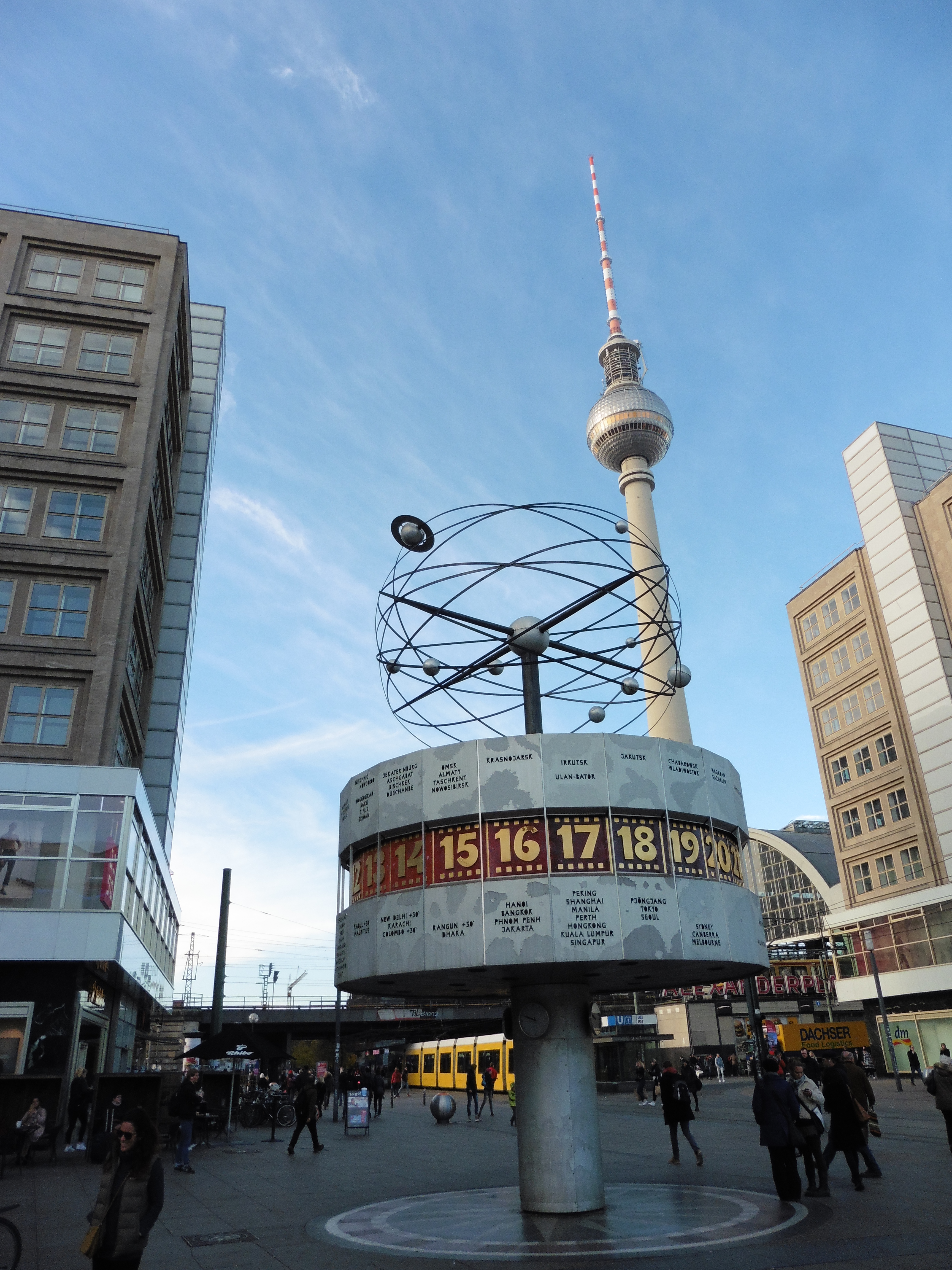 The sixteen ton world clock was opened to the public in 1969, shortly before the twentieth anniversary of the German Democratic Republic, along with the Berlin TV Tower(seen in the background). The erection of the clock was part of a larger plan to expand and reorganize Alexanderplatz as a whole. At the end of the renovations, the public square was four times larger than it was at the end of the World War II.
The sixteen ton world clock was opened to the public in 1969, shortly before the twentieth anniversary of the German Democratic Republic, along with the Berlin TV Tower(seen in the background). The erection of the clock was part of a larger plan to expand and reorganize Alexanderplatz as a whole. At the end of the renovations, the public square was four times larger than it was at the end of the World War II.
It was intended to be both a symbol of Communist power and of Berlin. It remains the latter today, as it is easily visible throughout the central and some suburban districts of Berlin. With its height of 368 metres (including antenna) it is the tallest structure in Germany, and the second-tallest structure in the European Union.
Gendarmenmarkt is a square in Berlin and the site of an architectural ensemble including the Konzerthaus (concert hall) and the French and German Churches. During World War II, most of the buildings were badly damaged or destroyed. Today all of them have been restored. The German Church was completely destroyed by fire in 1945, during World War II. After German reunification it was rebuilt, finished in 1993 and re-opened in 1996 as a museum of German history. The Konzerthaus Berlin is the most recent building on the Gendarmenmarkt. It was built by Karl Friedrich Schinkel in 1821 as the Schauspielhaus. Like the other buildings on the square, it was also badly damaged during World War II. The reconstruction, finished in 1984, turned the theatre into a concert hall. Today, it is the home of the Konzerthausorchester Berlin.
